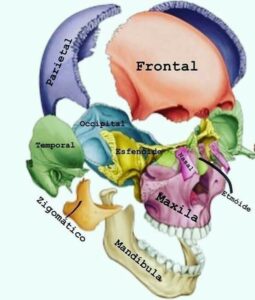German Shepherds are among the most beloved and loyal dog breeds worldwide, known for their intelligence, versatility, and unwavering devotion to their families. However, like all purebred dogs, German Shepherds are susceptible to specific health conditions that can significantly impact their lifespan and quality of life. Understanding the main causes of death in German Shepherds is crucial for owners who want to provide the best possible care and potentially extend their companion’s life.
According to veterinary studies and breed-specific health surveys, the primary causes of death in German Shepherds include hemangiosarcoma, gastric dilatation-volvulus (bloat), degenerative myelopathy, and various cardiac conditions. These conditions often develop silently and can progress rapidly, making early detection and preventive care essential for German Shepherd owners.
The Leading Killer: Hemangiosarcoma in German Shepherds
Hemangiosarcoma stands as the number one cause of sudden death in German Shepherds, accounting for approximately 25-30% of all deaths in the breed. This aggressive cancer affects the blood vessels and commonly develops in the spleen, heart, or liver. What makes hemangiosarcoma particularly devastating is its ability to remain completely asymptomatic until it reaches advanced stages.
Understanding Hemangiosarcoma
Hemangiosarcoma is a malignant tumor that originates from the cells lining blood vessels (endothelial cells). In German Shepherds, this cancer shows a strong predilection for the spleen, where it can grow to significant sizes before causing any noticeable symptoms. The tumor is highly vascular, meaning it’s filled with blood vessels, which makes it prone to spontaneous rupture.
When hemangiosarcoma ruptures, it causes massive internal bleeding, leading to what appears to be sudden death. Many owners report that their seemingly healthy German Shepherd collapsed without warning and died within hours or even minutes. This tragic scenario has earned hemangiosarcoma the nickname “the silent killer” among veterinary professionals.
Risk Factors and Demographics
Several factors increase a German Shepherd’s risk of developing hemangiosarcoma:
- Age: Most commonly affects dogs between 8-13 years old
- Gender: Slightly more common in male German Shepherds
- Genetics: Strong hereditary component suggests genetic predisposition
- Size: Large breed dogs like German Shepherds have higher incidence rates
- Previous cancer history: Dogs with previous cancer diagnoses show increased risk
Early Warning Signs
While hemangiosarcoma often develops silently, some subtle signs may indicate its presence:
- Gradual decrease in energy levels
- Intermittent pale gums
- Occasional abdominal distension
- Episodes of weakness or collapse followed by apparent recovery
- Loss of appetite without obvious cause
- Difficulty breathing during exercise
According to Wikipedia’s comprehensive overview of hemangiosarcoma, early detection significantly improves treatment outcomes, though the prognosis remains guarded even with aggressive treatment.
Gastric Dilatation-Volvulus (Bloat): The Emergency Killer

Gastric dilatation-volvulus (GDV), commonly known as bloat, represents the second leading cause of death in German Shepherds and is responsible for approximately 15-20% of breed-related deaths. Unlike hemangiosarcoma, bloat is an acute emergency condition that can kill within hours if not treated immediately.
The Mechanics of Bloat
GDV occurs when the stomach fills with gas, food, or liquid and then twists on itself, cutting off blood supply to the stomach and other organs. This rotation also traps the contents in the stomach and prevents the dog from vomiting or belching to relieve the pressure. As the condition progresses, the enlarged stomach puts pressure on major blood vessels, leading to shock and death.
German Shepherds are particularly susceptible to bloat due to their deep chest conformation and large size. The breed’s anatomy creates more space for the stomach to move and potentially twist, especially when combined with certain risk factors.
Risk Factors for Bloat in German Shepherds
Understanding these risk factors can help owners take preventive measures:
- Eating habits: Fast eating, large meals, eating from elevated bowls
- Exercise timing: Vigorous activity immediately before or after meals
- Age: More common in dogs over 7 years old
- Stress: High-stress situations or anxious temperaments
- Family history: Genetic predisposition if parents or siblings affected
- Body condition: Both overweight and underweight dogs show increased risk
Recognizing Bloat Symptoms
Time is critical with bloat – every minute counts. Owners should watch for these warning signs:
- Unsuccessful attempts to vomit (dry heaving)
- Enlarged, hard, or distended abdomen
- Excessive drooling
- Panting and restlessness
- Weakness or collapse
- Pale gums
- Rapid heart rate
If you suspect bloat, seek emergency veterinary care immediately. Do not wait to see if symptoms improve – bloat is always a medical emergency requiring immediate surgery.
Degenerative Myelopathy: The Progressive Killer
Degenerative myelopathy (DM) affects approximately 7% of German Shepherds and, while not immediately fatal, significantly impacts quality of life and often leads to euthanasia due to progressive paralysis. This neurological condition specifically targets the spinal cord, causing gradual loss of coordination and mobility.
Understanding Degenerative Myelopathy
DM is a progressive disease that affects the white matter of the spinal cord, similar to amyotrophic lateral sclerosis (ALS) in humans. The condition typically begins with subtle hind limb weakness and progresses to complete paralysis over 6 months to 3 years.
The disease is caused by mutations in the SOD1 gene, which provides instructions for making superoxide dismutase, an enzyme that breaks down harmful oxygen molecules in cells. When this gene is mutated, toxic substances accumulate in nerve cells, leading to their destruction.
Progression and Symptoms
DM follows a predictable progression pattern:
Stage 1 (Early):
- Subtle hind limb weakness
- Difficulty rising from lying position
- Occasional stumbling or dragging of rear paws
- Loss of coordination in hind limbs
Stage 2 (Intermediate):
- Obvious weakness in hind limbs
- Difficulty walking on slippery surfaces
- Muscle atrophy in rear legs
- Loss of bladder and bowel control
Stage 3 (Advanced):
- Complete paralysis of hind limbs
- Potential progression to front limbs
- Difficulty breathing (in final stages)
- Quality of life significantly compromised
Genetic Testing and Prevention
German Shepherd owners can now test their dogs for DM using genetic testing. Dogs can be:
- Clear (no copies of the mutation)
- Carrier (one copy – will not develop DM but can pass it to offspring)
- At-risk (two copies – likely to develop DM)
Just as owners learn to adapt when caring for pets with disabilities, embracing love, resilience, and hope in special-needs companions, those dealing with DM can find ways to maintain their dog’s quality of life through physical therapy, mobility aids, and dedicated care.
Cardiac Conditions: Silent Heart Killers
Heart disease accounts for approximately 10-15% of German Shepherd deaths, with several specific conditions affecting the breed more commonly than others. These cardiac issues often develop gradually and may not show symptoms until they reach advanced stages.
Common Cardiac Conditions in German Shepherds
Dilated Cardiomyopathy (DCM): This condition causes the heart muscle to become weak and enlarged, reducing its ability to pump blood effectively. Recent research has linked some cases of DCM to grain-free diets, particularly those high in peas, lentils, and potatoes.
Congenital Heart Defects: Some German Shepherds are born with structural heart abnormalities, including:
- Subaortic stenosis (narrowing below the aortic valve)
- Patent ductus arteriosus (failure of fetal blood vessel to close)
- Tricuspid valve dysplasia (malformed heart valve)
Cardiac Arrhythmias: Irregular heartbeats can cause sudden collapse and death, even in seemingly healthy German Shepherds. These rhythm disturbances may be inherited or develop secondary to other heart conditions.
Nutrition and Heart Health Connection
Recent veterinary research has highlighted the connection between diet and heart health in German Shepherds. The FDA has investigated potential links between grain-free diets and dilated cardiomyopathy, finding that diets high in peas, lentils, and other legumes may contribute to heart disease development.
Recommendations for heart-healthy nutrition:
- Choose diets with traditional grains unless your dog has allergies
- Ensure adequate taurine and L-carnitine levels
- Maintain appropriate body weight
- Discuss supplements with your veterinarian
- Regular cardiac monitoring for at-risk dogs
Age-Specific Death Risks in German Shepherds
Puppy and Young Adult Deaths (0-2 years)
Sudden death in young German Shepherds often results from congenital conditions or acute emergencies:
- Congenital heart defects: May cause sudden collapse during exercise
- Bloat: Can occur even in young dogs, though less common
- Toxin ingestion: Puppies are more likely to consume dangerous substances
- Infectious diseases: Parvovirus, distemper, and other preventable diseases
- Trauma: Accidents, falls, or vehicle strikes
Adult Deaths (2-7 years)
Middle-aged German Shepherds face different risks:
- Early-onset bloat: Peak risk period begins around 4-5 years
- Hemangiosarcoma: Can begin developing during middle age
- Immune-mediated diseases: Autoimmune conditions become more common
- Orthopedic emergencies: Severe hip dysplasia complications
Senior Deaths (7+ years)
Older German Shepherds typically succumb to:
- Cancer: Hemangiosarcoma, osteosarcoma, lymphoma
- Organ failure: Kidney, liver, or heart failure
- Neurological disease: Degenerative myelopathy progression
- Quality of life issues: Multiple concurrent health problems
Prevention Strategies and Early Detection
Routine Health Monitoring
Regular veterinary examinations form the foundation of preventive care:
- Annual wellness exams for dogs under 7 years
- Bi-annual exams for senior dogs (7+ years)
- Cardiac screening including ECGs and echocardiograms
- Abdominal ultrasounds to screen for splenic masses
- Complete blood panels to monitor organ function
Genetic Testing and Breeding Considerations
Modern genetic testing allows German Shepherd owners to screen for:
- Degenerative myelopathy (DM) mutations
- Hip dysplasia predisposition genes
- Cardiac condition risk factors
- Cancer susceptibility markers
Lifestyle Modifications for Longevity
Exercise Management:
- Avoid vigorous exercise immediately before or after meals
- Provide regular, moderate exercise to maintain cardiac health
- Swimming and low-impact activities for dogs with joint issues
Dietary Considerations:
- Feed smaller, more frequent meals to reduce bloat risk
- Choose high-quality, traditional grain-inclusive diets
- Maintain optimal body weight throughout life
- Consider heart-healthy supplements after veterinary consultation
Environmental Safety:
- Puppy-proof homes to prevent toxin ingestion
- Provide safe, non-slip surfaces for dogs with mobility issues
- Monitor for signs of distress or pain regularly
Emergency Preparedness for German Shepherd Owners
Creating an Emergency Action Plan
German Shepherd owners should prepare for potential emergencies by:
- Identifying 24-hour emergency clinics in your area
- Keeping emergency contact numbers readily available
- Learning basic first aid for dogs
- Understanding breed-specific emergency signs
- Having a emergency fund for unexpected veterinary costs
When to Seek Immediate Care
Contact your veterinarian or emergency clinic immediately if your German Shepherd shows:
- Signs of bloat (distended abdomen, unsuccessful vomiting attempts)
- Sudden collapse or weakness
- Difficulty breathing
- Pale or white gums
- Severe pain or distress
- Any sudden change in behavior or activity level
The Role of Veterinary Technology and Tools
Modern technology has revolutionized German Shepherd healthcare. While discussing health topics might seem overwhelming, tools like the Bible verse generator can provide comfort during difficult times with your pet. For those tracking health expenses or insurance decisions, the trade analyzer tool can help evaluate the financial aspects of veterinary care. When sharing your dog’s health journey online or creating medical records, the fancy text tool can help format important information clearly and attractively.
Advanced Diagnostic Capabilities
Modern veterinary medicine offers sophisticated diagnostic tools:
- Digital radiography for rapid orthopedic and cardiac assessment
- Ultrasound technology for real-time organ evaluation
- MRI and CT scanning for detailed neurological examination
- Genetic testing panels for comprehensive breed-specific screening
- Cardiac monitoring including Holter monitors and event recorders
Insurance and Financial Planning for German Shepherd Health
Understanding Breed-Specific Insurance Considerations
German Shepherds are considered a higher-risk breed by many pet insurance companies due to their predisposition to expensive conditions like bloat surgery, cancer treatment, and orthopedic procedures. According to Forbes’ analysis of pet insurance, breed-specific considerations significantly impact premium costs and coverage decisions.
Key insurance factors for German Shepherds:
- Pre-existing condition exclusions: Genetic conditions may not be covered if signs appear before policy activation
- Hereditary condition coverage: Ensure policies cover breed-specific genetic diseases
- Emergency care coverage: Critical for bloat and other acute emergencies
- Specialist referral coverage: Important for cardiac, neurological, and oncological care
Cost Planning for Common Conditions
Typical treatment costs for major German Shepherd health issues:
- Bloat surgery: $3,000-$8,000
- Hemangiosarcoma treatment: $5,000-$15,000
- Hip dysplasia surgery: $4,000-$7,000 per hip
- Cardiac workup and treatment: $2,000-$6,000
- Degenerative myelopathy management: $1,000-$3,000 annually
Quality of Life Considerations and End-of-Life Decisions
Recognizing When Quality of Life is Compromised
German Shepherd owners must sometimes make difficult decisions about their dog’s quality of life. Key factors to consider include:
Physical comfort: Can pain be adequately managed? Mobility: Can the dog move around independently or with minimal assistance? Appetite and hydration: Is the dog still interested in food and water? Social interaction: Does the dog still engage with family members? Dignity: Can the dog maintain basic functions like toileting?
End-of-Life Planning
Preparing for end-of-life decisions:
- Discuss quality of life assessments with your veterinarian
- Consider in-home euthanasia services for a peaceful transition
- Plan for aftercare, including burial or cremation options
- Seek support from pet grief counselors or support groups
Conclusion: Protecting Your German Shepherd’s Health and Longevity
Understanding the main causes of death in German Shepherds – hemangiosarcoma, bloat, degenerative myelopathy, and cardiac conditions – empowers owners to make informed decisions about their dog’s health care. While we cannot prevent all genetic predispositions, we can significantly impact our dogs’ quality of life and potentially extend their lifespan through:
Proactive healthcare: Regular veterinary examinations, genetic testing, and early intervention Lifestyle management: Appropriate diet, exercise, and environmental modifications
Emergency preparedness: Recognizing warning signs and having action plans ready Financial planning: Insurance coverage and emergency funds for unexpected health issues
German Shepherds typically live 9-13 years, but with proper care, many can exceed these expectations while maintaining good quality of life. The key lies in understanding your dog’s specific risks, working closely with your veterinary team, and remaining vigilant for early signs of the conditions that most commonly affect this remarkable breed.
Remember that each German Shepherd is an individual, and while breed predispositions provide important guidance, your dog’s specific health needs may vary. Regular communication with your veterinarian, combined with attentive observation of your dog’s behavior and condition, provides the best foundation for a long, healthy life together.
By staying informed about these health risks and taking proactive measures, German Shepherd owners can help ensure their loyal companions live their fullest, healthiest lives possible. The bond between humans and German Shepherds is truly special – one that deserves our commitment to providing the best possible care throughout their lives.




